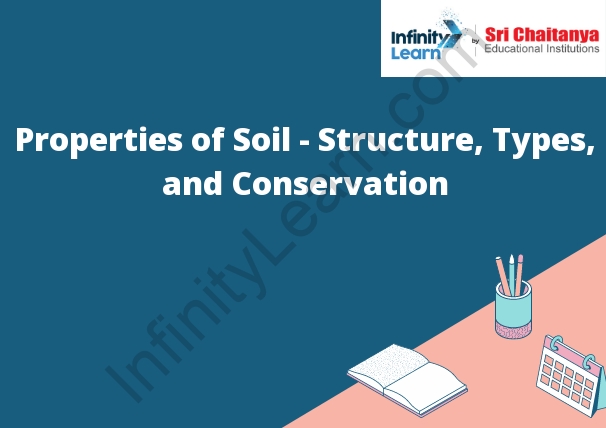Table of Contents
What is Properties of Soil?
Soil is a mixture of minerals, water, air, and organic matter. The proportions of these ingredients determine the properties of the soil. Soil properties include:
Texture: The texture of a soil is determined by the size of its mineral particles. Soil particles are classified as sand, silt, or clay.
Texture affects the ability of a soil to hold water and nutrients and to support plant growth. Soils with a high percentage of sand particles are called sandy soils. Sandy soils are well-drained and are good for growing crops that need a lot of air, such as vegetables and fruits. Soils with a high percentage of clay particles are called clay soils. Clay soils are poorly drained and are good for growing crops that need a lot of water, such as rice and corn.
Structure: Soil structure is determined by the way soil particles are arranged. Soil particles can be arranged in clumps (aggregates), in chains (filaments), or in sheets (plates).
Structure affects the ability of a soil to absorb and hold water and nutrients. Soils with good structure are called friable. Soils with poor structure are called cohesive. Cohesive soils are difficult to work with and tend to form clumps.
Soil moisture: Soil moisture is the amount of water in a soil. Soil moisture affects the ability of a soil to absorb and hold water and nutrients. Soils with

Physical Properties of Soil
Soil is a mixture of inorganic and organic materials that cover the Earth’s surface. Soil is composed of mineral particles and organic matter. The mineral particles are made up of small rocks and crushed particles of larger rocks. The organic matter is made up of material from plants and animals. Soil also contains water and air.
Soil has many physical properties that are important for plants. Soil has a texture, which is the size and shape of the mineral particles. Soil also has a structure, which is the way the mineral particles are arranged. Soil has a color, which is affected by the type of minerals and organic matter in the soil. Soil also has a pH, which is a measure of the acidity or alkalinity of the soil.
Soil Horizon
A soil horizon is a layer in the soil that differs in color, texture, structure, or chemical composition from the layers above or below it. Soil horizons are usually named for the most abundant or dominant feature in that layer. The A horizon, which is the top layer of soil, is usually the darkest because it is richest in organic matter. The B horizon is usually lighter in color than the A horizon because it is less fertile and contains more minerals. The C horizon is the layer of soil that is closest to the bedrock and is usually the lightest in color.
The pH of Soil
The pH of soil is determined by the amount of hydrogen ions (H+) present in the soil. Soils with a high concentration of H+ have a low pH, while soils with a low concentration of H+ have a high pH. Soil pH affects the availability of nutrients to plants, the ability of soils to support plant growth, and the activity of soil microorganisms. Soils with a pH of 6.5 or below are considered acidic, while soils with a pH of 7.5 or above are considered alkaline. Most plants grow best in soils with a pH of 6.0 to 7.5.
Soil Structure Definition
Soil structure is the arrangement of soil particles into aggregates.
Types of Soil Structure
The three main types of soil structure are block, prismatic, and granular.
Block soil structure is where the soil particles are tightly packed together and do not easily crumble. This type of soil structure is common in soils that are high in clay content.
Prismatic soil structure is where the soil particles are in long, thin, parallel columns. This type of soil structure is common in soils that are high in sand content.
Granular soil structure is where the soil particles are loosely packed and easily crumble. This type of soil structure is common in soils that are high in organic matter.
What is Soil Conservation?
Soil Conservation is the management and prevention of soil erosion.
Formation of Soil
Soil is formed through the process of weathering and erosion.
Weathering is the breakdown of rocks into smaller pieces. This can be done through physical weathering, which is when the rocks are broken down by physical forces, or chemical weathering, which is when the rocks are broken down by chemical reactions.
Erosion is the process of moving the smaller pieces of rock and soil from one place to another. This can be done through wind, water, or ice.








